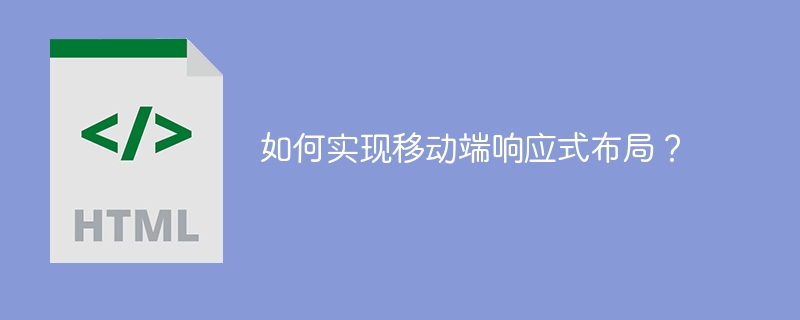

How to implement mobile responsive layout?
In today's mobile Internet era, more and more users use mobile devices to browse the web. Therefore, mobile responsive layout becomes an important design consideration. This article will introduce how to implement mobile responsive layout and provide some specific code examples.
1. Use media queries
Media queries are an important tool for implementing responsive layout. Through media queries, we can provide different styles and layouts for different devices based on different screen sizes and device characteristics. The following is a sample code:
/* 默认样式 */
.container {
max-width: 960px;
margin: 0 auto;
}
/* 响应式布局 */
@media screen and (max-width: 768px) {
.container {
max-width: 100%;
padding: 20px;
}
}In the above sample code, we first define a container class "container", and set its maximum width to 960px and display it in the center. We then use media queries to resize the container to 100% width and add 20px padding when the screen width is less than 768px. This way, when users browse the web on mobile devices, the container will automatically adapt to the width of the screen and better display the content.
2. Use Flexbox layout
Flexbox is a powerful CSS layout model that can help achieve flexible responsive layout. The following is a sample code implemented using Flexbox:
<div class="container"> <div class="box">Box 1</div> <div class="box">Box 2</div> <div class="box">Box 3</div> </div>
.container {
display: flex;
justify-content: space-between;
}
.box {
flex: 1;
background-color: #ccc;
padding: 10px;
}In the above sample code, we first created a container class "container" and set it to Flexbox layout using display: flex. We then placed three identical child elements inside the container, all with the "box" class. Use justify-content: space-between to evenly distribute child elements inside the container.
By using Flexbox layout, we can easily implement responsive layout on the mobile side, making the page display more reasonable and comfortable in different screen sizes.
3. Use Fluid Layout
Fluid layout is a simple and intuitive responsive layout method that achieves adaptability by setting the width of elements as a percentage. The following is a sample code implemented using fluid layout:
<div class="container"> <div class="box">Box 1</div> <div class="box">Box 2</div> <div class="box">Box 3</div> </div>
.container {
width: 100%;
overflow: hidden;
}
.box {
width: 33.33%;
float: left;
box-sizing: border-box;
padding: 10px;
}In the above sample code, we set the width of the container to 100% so that the container occupies the entire screen width. We then set the width of the child element to 33.33% and align it horizontally using float: left. By setting the width as a percentage, we can achieve adaptive layout under different screen sizes.
Summary:
The above are three common methods to implement mobile responsive layout, including using media queries, Flexbox layout and fluid layout. In actual development, we can choose the appropriate layout method according to the specific situation. Through the flexible application of CSS and HTML, we can achieve a good user experience on mobile devices and improve the access quality and user satisfaction of web pages.
The above is the detailed content of Guide to implementing responsive layout for mobile devices. For more information, please follow other related articles on the PHP Chinese website!




